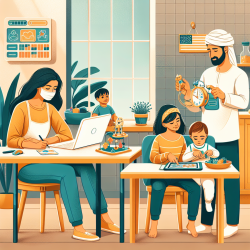Understanding the Prevalence of Intimate Partner Violence Against Adolescent Girls
Recent research published in The Lancet Child & Adolescent Health reveals alarming statistics about intimate partner violence (IPV) against adolescent girls worldwide. According to the study, nearly 24% of ever-partnered adolescent girls aged 15–19 have experienced physical or sexual violence by a male partner at least once in their lifetime, with 16% experiencing it in the past year. These figures highlight a critical public health issue that demands immediate attention and action.
Key Findings and Implications for Practitioners
The study provides comprehensive national and regional prevalence estimates of IPV against adolescent girls across 161 countries. The findings underscore the importance of understanding country-level factors that contribute to IPV, such as child marriage, female education, and gender equality in property rights. Here are some of the key takeaways for practitioners:
- Child Marriage: Countries with higher rates of child marriage also report higher IPV prevalence. Practitioners should advocate for policies that delay marriage age and support married adolescents.
- Education: Female secondary education enrollment is inversely related to IPV prevalence. Promoting education for girls can be a powerful tool in reducing IPV.
- Gender Equality: Legal frameworks that ensure gender-equal property rights are associated with lower IPV rates. Practitioners should support legal reforms that promote gender equality.
Actionable Steps for Practitioners
Practitioners can play a pivotal role in mitigating IPV against adolescent girls by implementing the following strategies:
- Advocacy and Policy Change: Work with local and national governments to promote policies that prevent child marriage and support gender equality.
- Education Initiatives: Develop programs that encourage girls to pursue secondary education and provide support for those at risk of dropping out.
- Community Engagement: Engage communities in discussions about the harmful effects of IPV and child marriage, promoting cultural shifts towards gender equality.
- Support Services: Establish and strengthen support services for adolescent girls who experience IPV, including counseling and legal assistance.
Encouraging Further Research
The study's findings highlight the need for further research into the contextual factors that influence IPV against adolescent girls. Practitioners are encouraged to explore these factors in their local contexts and contribute to a growing body of evidence that can inform policy and practice. Additionally, understanding the intersectionality of IPV with other social determinants of health can provide deeper insights into effective intervention strategies.
Conclusion
Intimate partner violence against adolescent girls is a pervasive issue that requires urgent attention from practitioners, policymakers, and communities. By leveraging the insights from this research, practitioners can develop targeted interventions that address the root causes of IPV and promote a safer, more equitable world for adolescent girls.
To read the original research paper, please follow this link: Intimate partner violence against adolescent girls: regional and national prevalence estimates and associated country-level factors.










